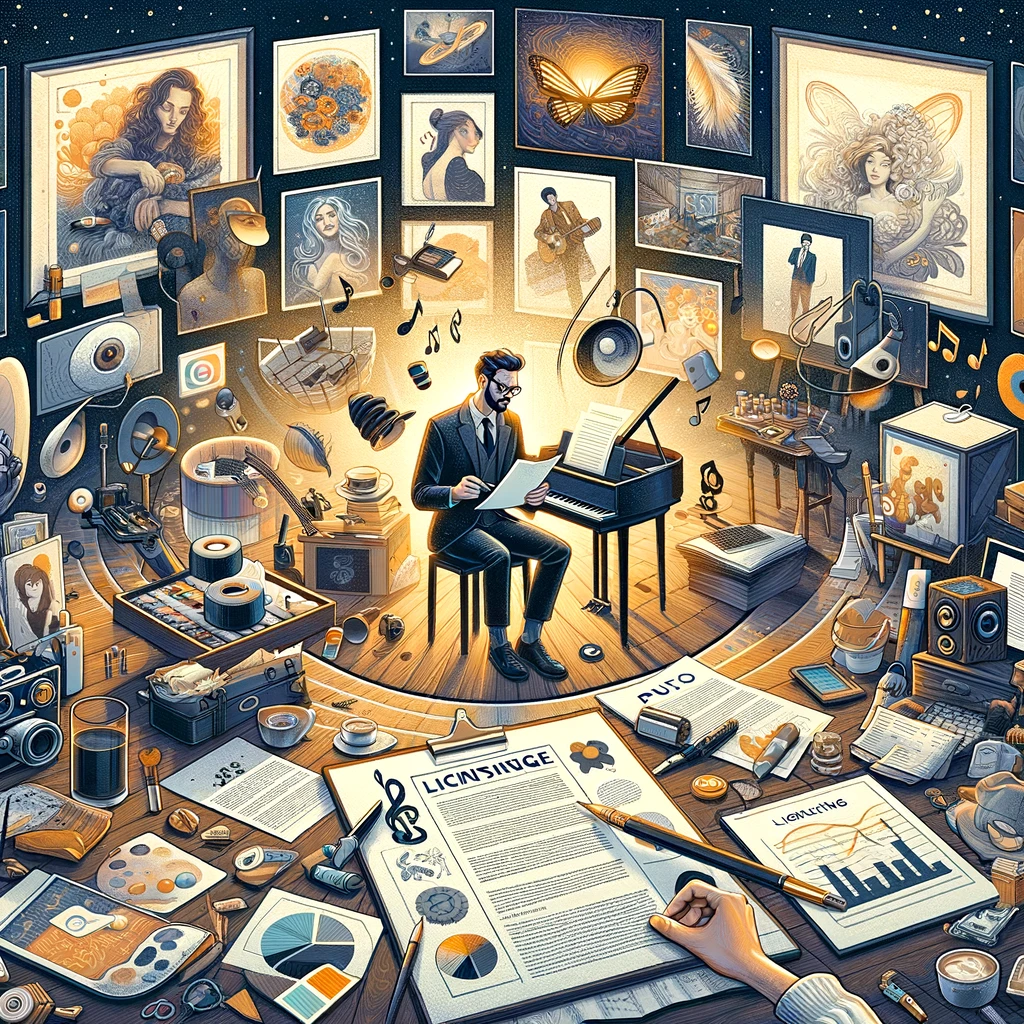
Licensing and royalties represent a valuable avenue for generating passive income, particularly for creators in the fields of music, art, and photography. This income stream allows artists to earn money from their work over time, offering financial benefits without requiring continuous active involvement. Understanding the basics of how licensing and royalties work is essential for any creator looking to leverage their intellectual property for long-term financial gain.
Licensing refers to the process where the creator of a work allows another party to use that work in exchange for compensation. This arrangement is typically governed by a licensing agreement, which specifies the terms under which the work can be used, such as the duration of the license, the geographical areas in which it applies, and the types of usage allowed. Royalties are the payments made to the owner of the work based on these agreements. They are typically calculated as a percentage of the revenues generated by the licensed work or as a flat fee per unit sold.
For artists, musicians, and photographers, licensing presents a lucrative opportunity to earn money from their creative outputs. Music licensing, for example, can occur in several contexts, including commercial use in advertisements, background music in public venues, or as part of soundtracks for movies and television shows. Art can be licensed for use on products such as clothing, posters, or household items, while photography might be licensed for use in publications, as stock photos, or for marketing purposes.
Negotiating licensing deals requires a good understanding of the value of your work and the market conditions. Artists should aim to retain as much control over their work as possible, specifying how and where their work can be used to avoid dilution of their brand. It’s important to be clear about exclusivity, duration, and remuneration. Having a well-drafted licensing agreement is crucial to avoid disputes and ensure that all parties are clear about their rights and responsibilities. Artists may benefit from consulting with a legal professional specializing in intellectual property to ensure their contracts are comprehensive and enforceable.
Several case studies highlight the potential of royalties as a source of passive income. One notable example is the estate of a famous musician whose songs continue to generate substantial royalty income years after their initial release. Every time one of their songs is played on the radio, streamed online, or used in a movie or advertisement, the estate earns royalties. Similarly, photographers who have licensed their photos as stock images can earn royalties each time someone downloads or uses their photos, turning a single photograph into a continuous source of income.
Visual artists also find success in this realm by licensing their designs to be used on merchandise like T-shirts and coffee mugs or in larger projects such as interior decor or architectural elements. These licensing deals not only bring in regular royalty checks but also help in amplifying the artist’s visibility and market reach.
Licensing and royalties provide a robust method for artists across various disciplines to capitalize on their creative works. By understanding the legal frameworks, negotiating effectively, and leveraging the potential of their work, creators can establish a sustainable passive income stream that enhances their financial security and allows them to continue focusing on their artistic pursuits.